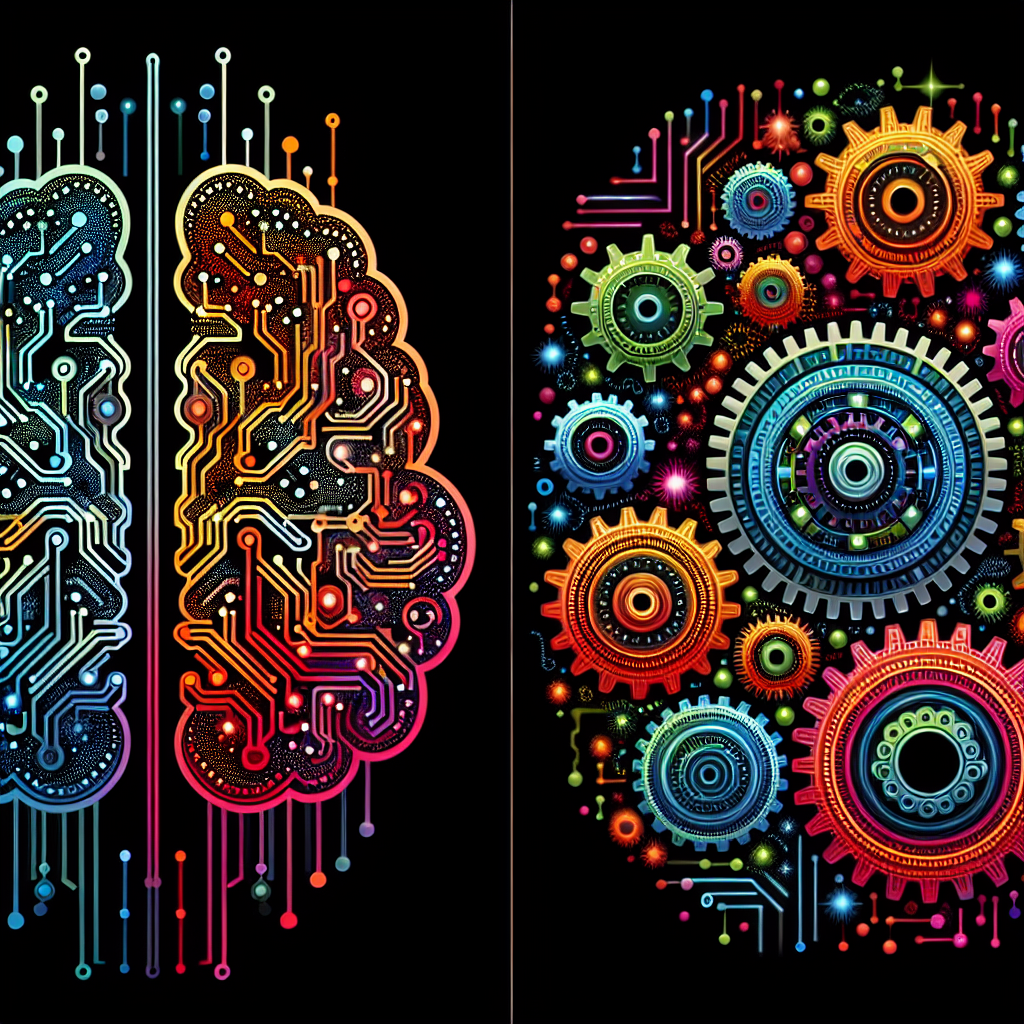In the world of technology, artificial intelligence (AI) and machine learning are two terms that are often used interchangeably. While they are related concepts, there are key differences between the two. In this article, we will explore the differences between AI and machine learning and discuss which is more important in today’s technology landscape.
AI vs Machine Learning: What is the Difference?
Artificial Intelligence (AI) is a broad field of computer science that focuses on creating intelligent machines that can perform tasks that typically require human intelligence. These tasks include speech recognition, decision-making, language translation, and visual perception. AI systems can be classified into two categories: narrow AI and general AI.
Narrow AI, also known as weak AI, is designed to perform a specific task or set of tasks. Examples of narrow AI include virtual assistants like Siri and Alexa, self-driving cars, and recommendation systems used by companies like Amazon and Netflix. Narrow AI is limited in scope and does not have the ability to think or learn beyond the tasks it was designed for.
General AI, also known as strong AI, is a hypothetical form of AI that can understand, learn, and apply knowledge in a wide range of tasks. General AI would have human-level intelligence and be able to solve complex problems in a variety of domains. While general AI is still a long way off, researchers continue to work towards creating machines that can think and reason like humans.
Machine learning, on the other hand, is a subset of AI that focuses on developing algorithms that can learn from and make predictions based on data. Machine learning algorithms are trained on large datasets to identify patterns and make decisions without being explicitly programmed. Machine learning is used in a wide range of applications, including fraud detection, image recognition, and natural language processing.
Machine learning can be further divided into three categories: supervised learning, unsupervised learning, and reinforcement learning. In supervised learning, the algorithm is trained on labeled data, where the correct answers are provided. In unsupervised learning, the algorithm is trained on unlabeled data and must find patterns on its own. In reinforcement learning, the algorithm learns through trial and error, receiving rewards or penalties based on its actions.
Which is More Important: AI or Machine Learning?
Both AI and machine learning play important roles in today’s technology landscape, but they serve different purposes. AI is focused on creating intelligent machines that can perform tasks that require human intelligence, while machine learning is focused on developing algorithms that can learn from data and make predictions.
In terms of importance, it can be argued that machine learning is more critical than AI. Machine learning is the foundation of many AI applications, providing the algorithms that enable machines to learn and make decisions. Without machine learning, AI systems would not be able to adapt to new data or make accurate predictions.
Machine learning is also more widely used in industry and research, with applications in areas such as healthcare, finance, and marketing. Companies like Google, Facebook, and Amazon rely heavily on machine learning algorithms to improve their products and services. Machine learning is also driving advances in areas like autonomous vehicles, robotics, and personalized medicine.
On the other hand, AI is still in its early stages of development and has not yet reached its full potential. While narrow AI applications like virtual assistants and recommendation systems are widely used, general AI remains a distant goal. Researchers are continuing to work on developing AI systems that can think and reason like humans, but significant challenges remain.
In conclusion, while both AI and machine learning are important in the field of technology, machine learning is more critical in driving innovation and advancing the capabilities of intelligent machines. Machine learning provides the algorithms that enable AI systems to learn from data and make decisions, making it a foundational technology in the development of intelligent machines.
FAQs:
Q: What are some examples of AI applications?
A: Some examples of AI applications include virtual assistants like Siri and Alexa, self-driving cars, recommendation systems used by companies like Amazon and Netflix, and chatbots used for customer service.
Q: How is machine learning used in healthcare?
A: Machine learning is used in healthcare for tasks such as diagnosing diseases, predicting patient outcomes, and identifying patterns in medical data. Machine learning algorithms can analyze large datasets to identify trends and make predictions that can improve patient care.
Q: What are the challenges of developing general AI?
A: Developing general AI is a complex and challenging task. Some of the key challenges include designing algorithms that can learn and reason like humans, understanding how to transfer knowledge across different domains, and ensuring that AI systems are ethical and safe.
Q: How is machine learning different from traditional programming?
A: Traditional programming involves writing code that specifies how a computer should perform a task. In contrast, machine learning involves training algorithms on data to learn patterns and make decisions. Machine learning is more flexible and adaptable than traditional programming, as it can learn from new data and improve over time.
Q: What are some future applications of AI and machine learning?
A: Some future applications of AI and machine learning include personalized medicine, predictive maintenance in manufacturing, autonomous vehicles, and smart cities. AI and machine learning are expected to play a key role in transforming industries and improving efficiency and productivity.

